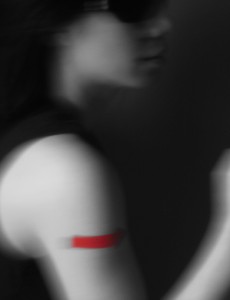 My two randomly selected winners are:
My two randomly selected winners are:
- Nora
- Kathy P
Congrats! You each will receive an ARC from Viking, so please give me your address via this contact form. If I don’t hear from you by Saturday, April 16, 10 a.m. PST, I’ll select alternate winner(s).
The book comes out May 3 so if you didn’t win, you can order it from any of the places below. Thanks to all who entered!
]]> I know I’m late making this announcement but my randomly selected winner is:
I know I’m late making this announcement but my randomly selected winner is:
- EIREGO
Congrats! Contact me by Tuesday Oct. 26, 5 p.m. PST and you’ll get a hardcover copy of Our Kind of Traitor.
I’ve got fantastic giveaways already lined up for the next couple months so check back often if you didn’t win this time!
]]>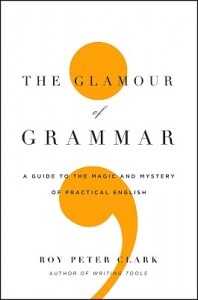 With the help of Random.org, I selected two winners:
With the help of Random.org, I selected two winners:
- Jodie Jackson
- Jann
Congrats! Please hit the contact button above and let me know where you’d like it sent. I’ll forward your addresses to Anna at Hachette Book Group, who will ship the book to you. If I don’t hear from you by Friday 9/10 at noon, alternate names will be chosen.
Thank you to all who entered. Stay tuned for giveaways of some great titles coming soon!
]]>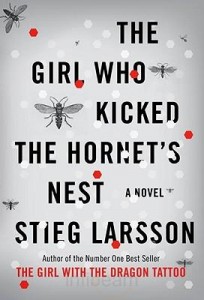 It was with a sense of melancholy that I closed the cover on Stieg Larsson’s The Girl Who Kicked the Hornet’s Nest (Knopf, May 25, U.S. release) after finishing the last page. For it is the last page; there will be no more Lisbeth Salander, a character I’ve been rooting for from the moment I met her in The Girl with the Dragon Tattoo, someone I’ve enjoyed spending time with, as antisocial as she is. I tried to prolong the experience, reading slowly and in small spurts, but failed miserably.
It was with a sense of melancholy that I closed the cover on Stieg Larsson’s The Girl Who Kicked the Hornet’s Nest (Knopf, May 25, U.S. release) after finishing the last page. For it is the last page; there will be no more Lisbeth Salander, a character I’ve been rooting for from the moment I met her in The Girl with the Dragon Tattoo, someone I’ve enjoyed spending time with, as antisocial as she is. I tried to prolong the experience, reading slowly and in small spurts, but failed miserably.
The events of the previous books in the Millenium trilogy have led to this (spoilers for those who haven’t read the other two books): Lisbeth being captured and put on trial for attempted murder, aggravated assault and other trumped up charges. She has to face Dr. Peter Teleborian, the nefarious psychiatrist who conspired with a maverick faction within the Secret Police to have Lisbeth sent away to an asylum when she was 12. Teleborian and his colleagues once again attempt to have her committed, neutralizing all claims of how they’ve abused her civil rights, but this time Lisbeth fights back with the help of her journalist friend, Mikael Blomkvist, and his lawyer sister, Annika Giannini, who decides to rep Lisbeth.
Meanwhile, the police are searching for her murderous half-brother Ronald Niedermann, who has unfinished business with Lisbeth. The two share the blood of their father, a depraved Russian spy defector, and in the end, Lisbeth must decide how much she’s willing to sacrifice in order to stop the evil from spreading. (End spoilers.)
While misogyny has been a running theme in these books, the other two also had strong mysteries built in. There are mystery elements here (who’s sending hate mail and stalking Erika Berger, former editor of Millenium magazine?) but I felt Larsson finally going all out with his condemnation of how some men still treat women, of how absolute power corrupts when there’s no one to watch the watchers (it’s convenient that one of the heroes is a journalist, as Larsson was). A dirty police inspector thinks the following while looking at Lisbeth:
She’s fucking retarded, [he] thought…He reminded himself that she was a lesbian and consequently not a real woman.
The fight Lisbeth now has on her hands is less a physical one than an intellectual one, for she must prove she’s not only mentally competent now but always has been. She must convince the judge that she and her rights have been repeatedly violated by men in power, not just because she’s a woman but a smart and resourceful one, a threat to those with malicious intent. These are big claims from a petite girl and I’ll just say her day in court is immensely satisfying.
Before she can get there, Lisbeth spends much of the book in seclusion (though she’s hardly idle), first in a hospital with a police guard then in jail awaiting trial. Because she’s such a badass, I wanted her out putting the hurt on those who deserve it. But she does have a final confrontation in which she makes a surprising decision, one which shows how her travails have changed her. And while I was sad to say goodbye, it’s good to leave her in a hopeful place, one in which she may no longer need to play with fire or kick hornets’ nests.
Nerd verdict: Girl finishes strongly
Buy The Girl Who Kicked the Hornet’s Nest from Amazon
Buy from Indie Bookstores
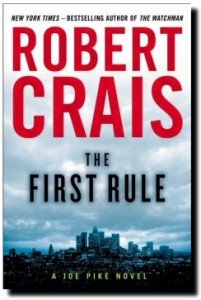 After I plugged everyone’s names into Random.org, giving extra entries to those who qualified, the website drew Sophie Littlefield as my first winner. Sophie, you get an ARC of Robert Crais‘s The First Rule (pub date 1/12/10), which will be sent to you directly from Putnam. Please e-mail me your address. My friend Lydia there said she’ll also throw in some temporary red arrow tattoos so you can be like Joe Pike!
After I plugged everyone’s names into Random.org, giving extra entries to those who qualified, the website drew Sophie Littlefield as my first winner. Sophie, you get an ARC of Robert Crais‘s The First Rule (pub date 1/12/10), which will be sent to you directly from Putnam. Please e-mail me your address. My friend Lydia there said she’ll also throw in some temporary red arrow tattoos so you can be like Joe Pike!
Random.org selected a second name for the autographed set of photo cards and that winner is le0pard13. I’ll ship you these with some red tats as well. Both you and Sophie will have to send me pictures after you try them on! (Mine’s below.)
Many, many thanks to all those who entered and shared your tales of heroism. It was inspiring to hear about all those good deeds, especially during this season. I always knew there are superheroes among us.
]]>
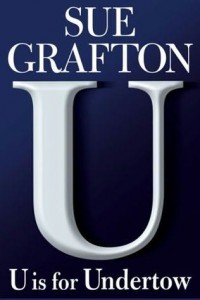 I’ve been reading Sue Grafton for a quarter century now, starting in high school when I found her books in the school library (I spent a lot of time there). I devoured the “A” through “C” Kinsey Millhone adventures like an ex-con having his first meal on the outside. Over the years, the books were uneven but I kept reading out of obligation, as if Kinsey had become an old friend whose imperfections I accepted. I listened to her tales even if she rambled a little.
I’ve been reading Sue Grafton for a quarter century now, starting in high school when I found her books in the school library (I spent a lot of time there). I devoured the “A” through “C” Kinsey Millhone adventures like an ex-con having his first meal on the outside. Over the years, the books were uneven but I kept reading out of obligation, as if Kinsey had become an old friend whose imperfections I accepted. I listened to her tales even if she rambled a little.
I was thrilled, then, to find her latest adventure, U is for Undertow, utterly captivating. After only a few pages, I knew Kinsey was back on track and I could dive in out of pure pleasure.
The case begins when Kinsey is approached by a young man named Michael Sutton who suddenly remembers something that happened when he was six years old. At the time, Sutton attached no significance to the incident but, after reading a newspaper article about an unsolved 21-year-old kidnapping of a little girl, he believes what he saw were two people burying the child.
After Sutton hires Kinsey to investigate, the story moves back and forth between 1988 (Kinsey’s present) and 1967, when the kidnapping occurred. Grafton deftly juggles multiple POVs; besides Kinsey’s, the author doles out pieces of the puzzle from the perspectives of several characters who are directly and tangentially involved in the crime, painting a full-bodied portrait of each. The plot turns in unpredictable directions and though it might be obvious early on who did it, Grafton keeps you guessing about the why.
The case is complex enough to keep Kinsey busy, but she’s also grappling with personal issues after making startling discoveries about her past which destroy her long-held perceptions of certain family members. Because the books are told in first person and I’ve sided with Kinsey for years against the relatives who abandoned her as a child, these new revelations threw me for a loop as well. Kinsey won’t be able to change overnight but at the end of this book, she takes brave, hopeful steps towards what could be an extreme life makeover.
Nerd verdict: Strong Undertow will pull you in
]]>I’ll admit I lived that way for years and found it liberating. As a kid, I left everything behind in Viet Nam to come to the States. Dogs, relatives, friends, shoes, books—my backpack was literally empty. But instead of refilling it as soon as I could, I left it bare. I’d learned I could survive on very little so why get attached to things again? (This didn’t apply to people, just objects.) When it came to spartan living, Jack Reacher and Joe Pike had nothin’ on me.
Eventually, though, I realized I had it backwards. Since I wasn’t destroyed by my losses, it must be all right to have things as long as I had the right attitude about them. I could probably set my backpack on fire like Clooney’s Bingham if I had to—it’s just stuff, right? As a mental challenge after seeing the movie, I looked around my home, thinking, “That chair’s replaceable, I don’t need that lamp, wouldn’t die without my TV.”
Then I got to my books. Could I live without them? What did they mean to me? And that’s when it hit me some weren’t just books, they’re snapshots of specific moments in my life. I could look at one and remember exactly where I was, what I was doing and how I felt while reading it.
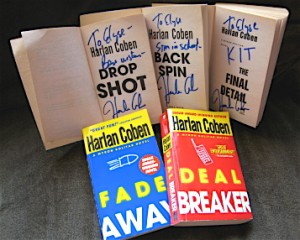 When I was traveling by myself a lot for work one summer, a set of Harlan Coben paperbacks kept me sane by making me laugh through 10-hour flight delays and sleep deprivation. Joan Aiken’s Nightbirds on Nantucket makes me instantly think of my friend Maria Taylor from 7th grade, who introduced me to the Wolves Chronicles featuring Dido Twite, a plucky girl whom I desperately wanted to be when I was young. Maria moved away after 7th grade but every time I look at Nightbirds on my shelf, I remember her.
When I was traveling by myself a lot for work one summer, a set of Harlan Coben paperbacks kept me sane by making me laugh through 10-hour flight delays and sleep deprivation. Joan Aiken’s Nightbirds on Nantucket makes me instantly think of my friend Maria Taylor from 7th grade, who introduced me to the Wolves Chronicles featuring Dido Twite, a plucky girl whom I desperately wanted to be when I was young. Maria moved away after 7th grade but every time I look at Nightbirds on my shelf, I remember her.
 Mary Higgins Clark’s While My Pretty One Sleeps reminds me of standing in line in frigid weather back in 1985 to meet the author for my virgin signing experience. I was so excited, you would’ve thought I sighted Elvis. And that first successful foray encouraged me to attend other author signings, resulting in many autographed books by my favorite writers.
Mary Higgins Clark’s While My Pretty One Sleeps reminds me of standing in line in frigid weather back in 1985 to meet the author for my virgin signing experience. I was so excited, you would’ve thought I sighted Elvis. And that first successful foray encouraged me to attend other author signings, resulting in many autographed books by my favorite writers.
 My Tintin books are the first things I remember being able to read on my own (though I read them in Vietnamese), and the first time I became obsessed with a series as a child, wanting to collect every adventure. A.A. Milne’s Winnie the Pooh books have lifted me through difficult times because that bear of very little brain is actually very wise. My copy of The Red Balloon takes me back to the time in fourth grade when I fell in love with Albert Lamorisse’s classic film Le Ballon Rouge because I didn’t need to speak English in order to grasp its wordless beauty.
My Tintin books are the first things I remember being able to read on my own (though I read them in Vietnamese), and the first time I became obsessed with a series as a child, wanting to collect every adventure. A.A. Milne’s Winnie the Pooh books have lifted me through difficult times because that bear of very little brain is actually very wise. My copy of The Red Balloon takes me back to the time in fourth grade when I fell in love with Albert Lamorisse’s classic film Le Ballon Rouge because I didn’t need to speak English in order to grasp its wordless beauty.
So, my question to you is: What are the books on your shelves snapshots of? What specific memories do they represent?
While I await your stories, I guess I won’t be lighting my backpack on fire after all.
]]>I was so excited, I even came up with some panels and authors I’d love to see at the 2010 convention:
- Lee Child discussing “Maximizing the Hurt in Your Fight Sequences”
- Sophie Littlefield on “How to Write 50,000 Words a Day and Get Buff Arms While Doing It”
- Charlie Huston on “Who Needs Quotation Marks?”
- Harlan Coben on “Deadly Sidekicks Can Wear Pink”
- Sue Grafton speaking about her next challenge, “Tackling the Chinese Alphabet”
- Gregg Hurwitz on “Writing Your First Novel at Age 12, Getting Published at 12.5”
- James Patterson on “Whittling Down Your Chapters to Just One Comma”
- Robert Crais and Michael Connelly demonstrating “Effective Greco-Roman Wrestling Moves to Subdue Bad Guys” (This panel will cost extra)
If you’re planning on going, which authors and panels would you like to see?
]]>There were many good stories so this was really hard for me to judge, but I finally chose the following two people as winner and runner-up. The winner gets first choice of book(s) from the list.
Winner: Poncho from Mexico, for traveling all the way to Germany for a trading card tournament and—this is the deal clincher—speaking Elvish. If you don’t even know what that language is, that’s exactly why Poncho won.
Runner-up: novelwhore from New York, for counting authors instead of sheep when she can’t sleep and for terminating relationships with people who use cutesy text lingo and/or emoticons in e-mails.
Congrats to both of you! Please e-mail me or hit “contact” in the upper right corner of this page, provide me with your address and let me know which book(s) you’d like.
Thank you to all who joined in the celebration, old and new friends alike. Stay tuned for more giveaways and another year of nerdy moments!
]]>So, I ask you: What persuades you to try a book by someone new to you? When you walk into a bookstore, what makes one stand out amongst all the competition? Conversely, what qualities would absolutely deter you from reading or even sampling a book?
Some of my own reasons are pretty mundane so there are no ridiculous answers. The more impassioned and subjective you are, the better!
]]>